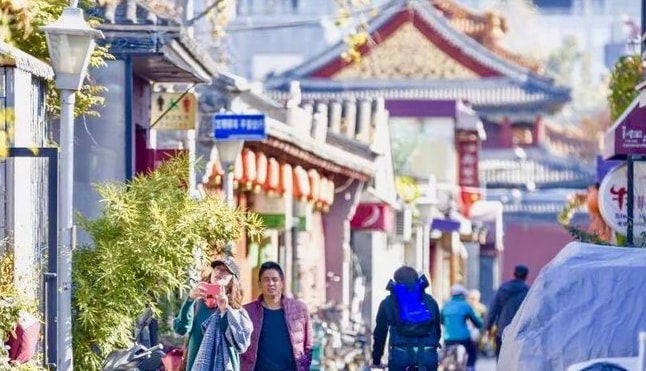
In Beijing, the hutongs are more than alleys where ordinary people live, as they contain many historical remains and old residences. This urban structure of the Yuan dynasty began in the 13th century AD.
Hutongs are deep alleys that stretch straight between the main streets and are made up of Siheyuan lines, traditional multi-room residences that open onto a square courtyard. First-time visitors to Beijing are often drawn to these narrow alleys. In them, tourists can find the typical elements of the ancient city of Beijing, feel the atmosphere of the imperial helmet and experience the authenticity of the Chinese capital.
The distribution of hutongs in Beijing has its origin in the urban structure of the capital of the Yuan dynasty, which was founded in the 13th century. At that time there were more than 6 thousand hutongs.
As you walk through the city center, you can come across the Guozijian Alley, where Chinese arches sparkle among the sophoras; the golden fish alley, which has a wonderful night view; the longest alley in the city, Dongjiaominxiang, or the winding nine-turn alley. The diversity of the alleys is one of the reasons why they have become an essential tourist attraction to visit, both on foot, on tricycles or by bicycle.
The diversity of the alleys is one of the reasons why the hutongs have become an essential tourist attraction to visit, both on foot, on tricycles or by bicycle.
The most typical hutongs, with the most original features, are those located in one of the main hulls of Beijing, Dongsi. The pleasant atmosphere of the old imperial city is still preserved here. Strolling through these small streets, the shadow cast by the sophoras, also known as "pagoda tree", enters the view in front of the doors of the houses, the rows of flowerpots placed along the gray walls and, Of course, there is no shortage of porcelain bottles on the shop windows, with the classic Beijing yogurt.
In the mornings, seniors often take walks with the bird cage in one hand and their pet leash in the other. At dusk, the neighbors gather for some talks accompanied by tea.
People are immersed in the way of life of the inhabitants who lived next to the forbidden city.
What happens here is the real, everyday life of local Beijing residents, which is sober and welcoming. Of course, the hutongs are more than alleys where ordinary people live, since here too many historical vestiges and ancient residences of the illustrious are hidden. In the alley called Dongsibatiao, you will find the former home of Ye Shengtao, a renowned Chinese writer and educator who has passed away. Now her relatives reside in it. In the courtyard of the house there are two huge blossoming apple trees. In the spring, numerous apple blossoms decorate the old house with its preciousness, showing the typical scene of the city of Beijing.
If we talk about the most famous and crowded alley in Beijing, it is essential to mention the southern Luogu alley. It has a length of 800 meters. From north to south, eight alleys respectively line both sides of the southern Luogu alley. Built in the same period with the Dadu capital of the Yuan dynasty, it is the only traditional residential area that fully preserves the alley structure of the dynasty, and is among the first 25 historical and cultural reserves of the city of Beijing. In the southern Luogu alley area, you can see different models of patios, apart from numerous famous people's residences, such as the ancient houses of the painter QiBaishi, and the writer Mao Dun.
Luogu Alley
More than that, in the southern alley Luogu, there are many highly creative shops. Entering the doors adorned with red lanterns, you can try various types of cocktails and tapas, while contemplating the articles of youthful design, it feels like a mixed space of the east and the west, from the past and the present. Luogu Southern Alley is one of 25 must-see attractions chosen by Time magazine.
Hutongs are not only residential areas, but also scenes of the historical evolution of the city. The physiognomy of different times has been engraved on them, which gives them a similar role to the museums of folk customs.
latercera.com
